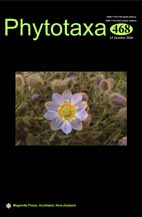Abstract
Phylogenetic position of the unique grass genus Coleanthus within the tribe Poeae s. str. is discussed based on molecular phylogenetic analysis of the marker sequences, ITS and trnL–trnF. Moreover, taxa more or less related to Coleanthus were involved in our study for the maximal accuracy of the molecular phylogenetic analysis. Subtribe Coleanthinae (=Puccinelliinae) is monophyletic according to both datasets, nuclear and chloroplast genes, that probably shows certain evolutionary distance from other Poeae s. str. We confirmed the results of previous morphological studies that placed Coleanthus close to the genus Phippsia but at the same time we have not found any evidences of the affinity between the genus Phippsia and the second putative ancestor, Deschampsia. The clade which contains Coleanthus and Phippsia occupies the sister position to all other genera of the subtribe Coleanthinae. The genus Phippsia produces hybrids with Puccinellia, ×Pucciphippsia, but the relationship obtained by our data is far more distant that was considered before from its morphological features. The genus Puccinellia forms a single monophyletic clade—sister to the genus Sclerochloa and former Colpodium s. l. (Paracolpodium, Catabrosella) which are monophyletic with Catabrosa. In partial contradiction to previous research (Soreng et al. 2015)—we found that the subtribe Coleanthinae is rather distant from two-chromosome grasses in ITS analysis though chloroplast genes show the sister position of the species from the 2-chromosome grasses group, Colpodium versicolor (2n = 4), to Coleanthinae. Also we detected multiple reticulation events in the tribe Poeae s. str. and some of them—within the subtribe Coleanthinae. This can explain an uncertain position of the two-chromosome grasses in relation to Coleanthinae.

